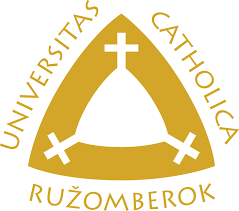Samizdat editions of religious literature, church documents, prayers, lay testimonies, poetry, and literature with Christian elements were very important in the Catholic Church. When the Communists shut down all the seminaries at the universities in 1950, an underground church emerged within the Catholic Church, which did not agree with the practices of the socialist regime and defended independence, the freedom of religion, the freedom of the press and mass media without censorship, the right to private property, and called attention to the harsh repression of the believers by the communist regime. Between 1950 and 1989, the activists translated, mostly anonymously, foreign religious literature to Slovak and wrote testimonies and books which are in the library of the Catholic University today. Other writings came into being in foreign exile and were circulated in Slovakia illegally. The secret underground church was in a sharp conflict with the Peace Movement of the Catholic Clergy (1950 – 1968) and with the Pacem in Terris association of Catholic priests in the Czechoslovak Socialist Republic (1971 – 1989). Both of these were initiated by the Communists who forced priests to join them. They functioned as an instrument of supervision over the priests and the Church.
The online register of the University Library of the Catholic University does not differentiate between samizdat literature and legally published books, periodicals, manuals, or hymnals. Therefore, the samizdats cannot be searched separately. They can be identified based on the absence of their bibliographical data which used to be deliberately omitted in them (year of issue, place of issue, publisher) or contained misleading information (such as non-existent publishers). The online register of the Košice Branch of the University Library of the Catholic University in Ružomberok lists information like “samizdat” or “typewritten copy” only when it is beyond doubt that this is really the case. In other cases, it provides information like “bm” (“bez miesta” – no place) or “BV” (“bez vydavateľa – no publisher), “br.” (“bez roku” – no year). These identifiers mean that basic bibliographic data are missing in the respective titles, and this is characteristic for samizdats. Under the “samizdat” entry, publications about this topic (foreign ones and local ones published after 1989) are registered.
Other institutes of the Catholic University in Ružomberok collecting samizdats include the Institute of Musical Art, Science, and Sacred Music of the Faculty of Education of the Catholic University in Ružomberok and the Institute of Sacred Art of the Institute of Theology of the Catholic University in Spišská Kapitola – Spišské Podhradie.
The collection was initiated by Amatius Akimjak. These are collections of New Hymns, that is, of the European version of gospel music, compiled by Amantius Akimjak in 1980. When Amantius Akimjak arrived at the seminary in Bratislava as a student of the Faculty of Theology in 1980, he was expelled after half a year because he had organized a hunger strike against the national meeting of the Pacem in Terris at the Faculty of Roman Catholic Theology of Cyril and Methodius of Comenius University and in the Seminary in Bratislava. In 1980, the prefect of the seminary, Peter Kupča, gave an assignment to all the students of the Faculty of Theology to collect youth songs during their vacation, and these were to be put together by Amantius Akimjak. When he returned to year two, the state had already revoked its consent to prefect Peter Kupča, who originally initiated his activities of working with the youth and with music, to pursue his profession of a priest. At that time, Akimjak was leading a choir of the seminarists called Schola Cantorum, and several members of the choir helped him to compile collections of songs.
This is how hymnals with notation came into being for the various periods of the liturgical year: The Lord Loves Us, Under the Protection of the Mother, The Lord has Risen from the Dead, The Lord Is Born (Bratislava 1982 - 1984). Originally, there were seven such collections but only 4 hymnals were stated as the most well-known of these. Original songs from the repertoire of existing youth choirs and Christian bands, for example Kapucíni or “Košičania 1984”: Loving Father, Take Care of Me, „Košičania 1978“: I Want to Swing the Bell, also made their way into the collections. Old religious folk songs were also included into the repertoire of New Hymns in these 4 collections: Oh Jesus My Wounded One (labelled as an old song from the Záhorie region), Here in the Holiest Sacrament (“Slovak folk song”)... Moreover, there is, for example, W. A. Mozart’s Ave verum corpus (Hail, True Body) in Slovak translation, G. F. Händel’s Aleluja resurrexit (in Latin), J. L. Bella’s That Day (in the repertoire of the Ursus youth gospel choir from Bratislava), and the Vatican Radio jingle Christus vincit.
At the time when the underground church was being formed, the production and distribution of samizdats was an important part of the activities. Through this literature, the church could truthfully inform the people about the religious persecutions and spread its teachings. Samizdats, with their opinion, existence and influence on people, including children and young people, represented a form of “cultural opposition” against the atheistic state. In the 1980s, the underground movement in the Catholic Church used to distribute collections and record tapes illegally because, from the aspect of the official state of affairs, their authors did not apply for a permission and did not go through the approval procedures of the central authorities. Collections were published illegally, and tapes were recorded illegally. With the latter, the songs were spread more easily among the youth because they built on the mainly oral tradition of the existence of music.

